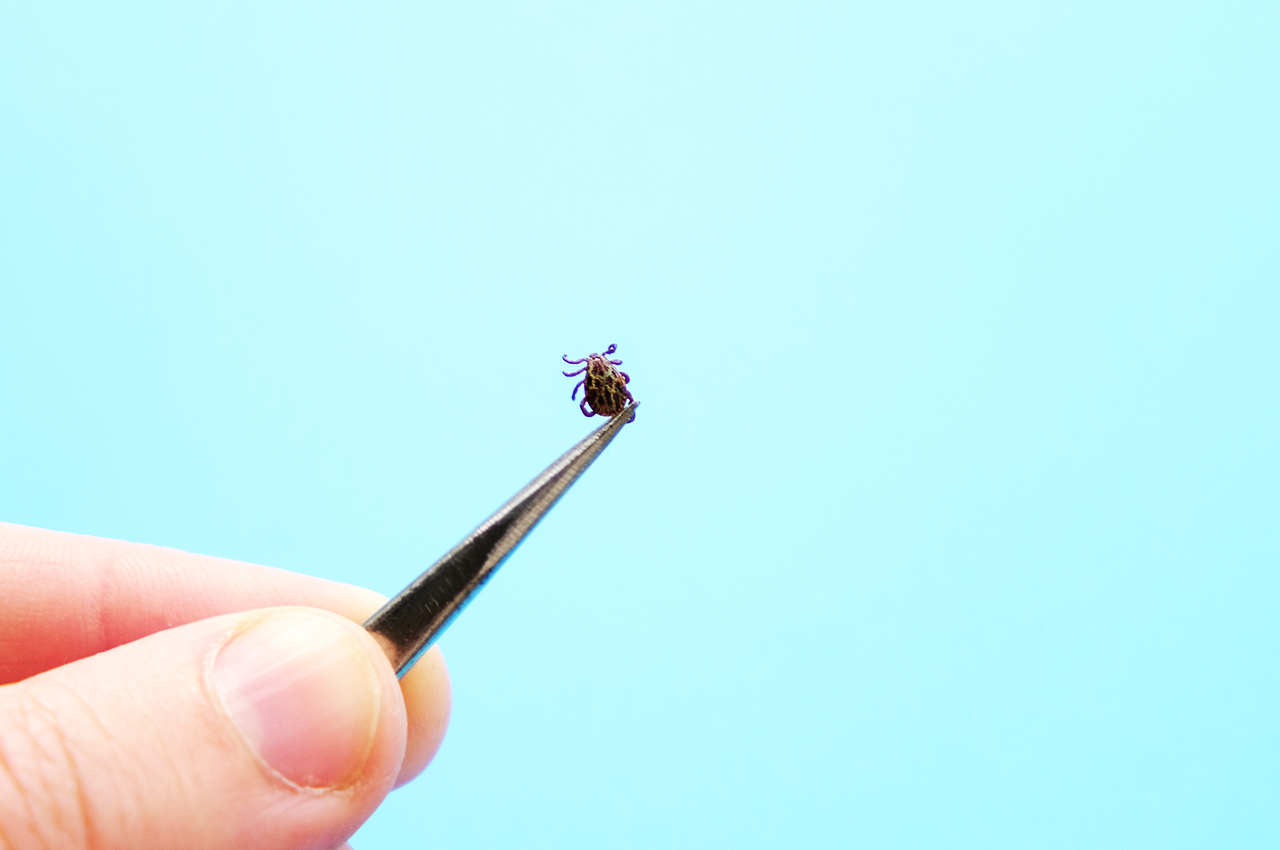Ticks belong to a group of animals called arachnids because they’re closely related to spiders. They look a lot like spiders and have eight legs.
Ticks have oval bodies that swell when they feed on the blood of all kinds of animals, including humans.
With just a bite, ticks can bring on allergic reactions or pass on diseases to humans and pets. These can be dangerous or even deadly.
Ticks are mostly found outdoors. They make their homes in wooded areas with lots of shrubs, in grass, weeds and bushes. They settle down in overgrown patches in your yard. If you’re outside hiking or playing, you may pick up a tick. It can attach itself to your pet, too. Ticks may stay attached to your pet, or they can jump on to you when you touch or hold your pet.
A tick bite
Because some ticks are relatively small, there’s a good chance you won’t notice one on you. They burrow their little head into your skin and release blood-thinning, skin-numbing saliva.
If you’re bitten by a tick, a small red bump may appear in a few days, usually at the site of the bite. This bump may feel warm and tender when touched.
Tick bite fever
If you’re allergic to tick bites, you may feel:
- A burning sensation at the site of the bite.
- Pain or swelling at the bite site.
- A rash.
- Blisters
- Difficulty breathing, if severe.
Ticks spread diseases by passing on bacteria, viruses, and parasites. Most of these illnesses give you typical flu-like symptoms, like chills, fever, headache, and muscle aches. Lyme disease is one of the most common tick-borne diseases in the world.
Symptoms of tick-borne diseases include:
- A full body rash
- A red spot or rash near the bite site
- Neck stiffness
- Headache
- Nausea
- Weakness
- Swollen lymph nodes
How to remove a tick
If you’re bitten, you’ll have to remove the tick as soon as possible. Don’t use petroleum jelly or a hot match to kill and remove a tick. These methods don’t get the tick off the skin, and they can make it burrow even deeper. Follow these steps instead:
- Use tweezers to grasp the tick firmly at its head or mouth, next to the skin.
- Pull firmly until the tick lets go of the skin. Avoid twisting it or rocking it from side to side. If a part of the tick stays in the skin, don’t stress, it will eventually come out on its own.
- Release the tick into a small plastic bag or jar.
- Wash your hands and the site of the bite with soap and water.
- Swab the bite site with alcohol.
At this point, it may be best to see a doctor to find out if any treatment is necessary based on the type of tick; and to find out about the risk and complications to look out for.
References
- https://kidshealth.org/en/parents/tick-removal.html
- https://www.health.com/mind-body/tick-borne-illness-facts
- https://www.health.com/mind-body/tick-borne-illness-facts?slide=329576#329576
- https://www.healthline.com/health/tick-bites#prevention
- https://www.hopkinsrheumatology.org/specialty-clinics/lyme-disease-clinical-research-center/what-to-do-after-a-tick-bite/

